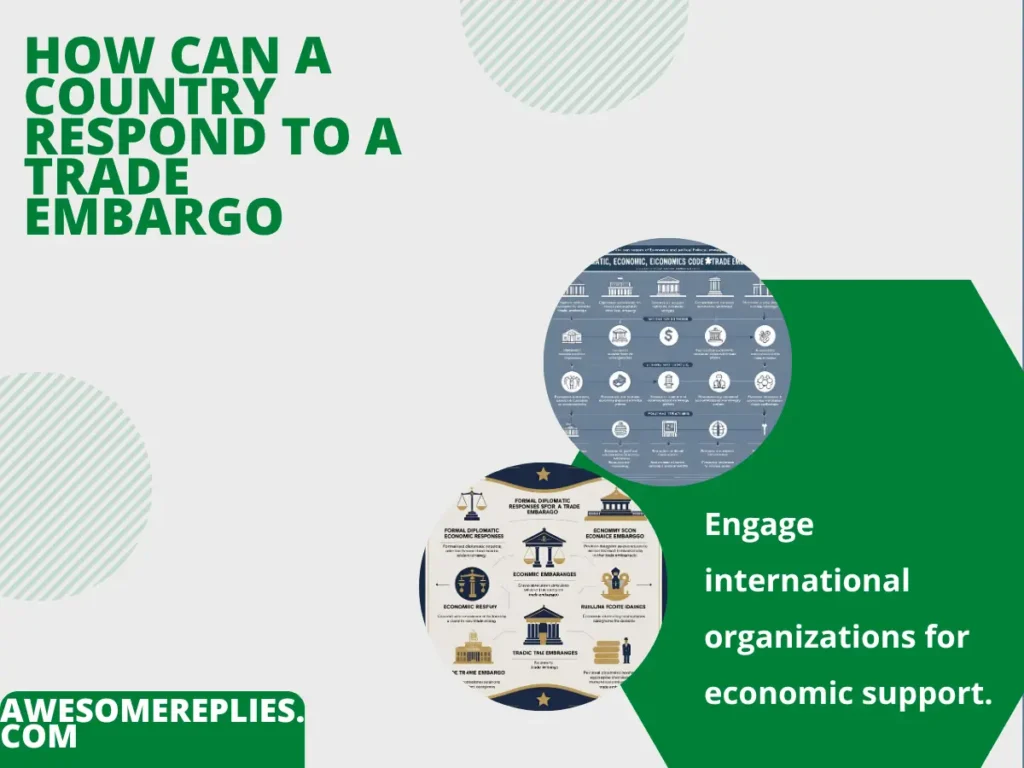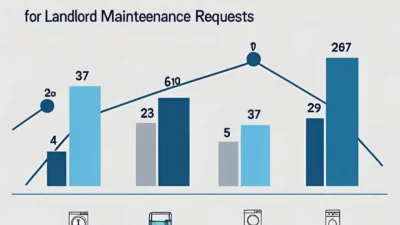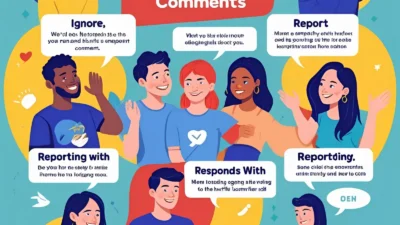Struggling to find the perfect way to describe how a country can respond to a trade embargo? You’re not alone.
Many search for clear, precise ways to express this complex idea, whether for academic papers, policy discussions, or casual debates.
As soon as you dive into this article, your search ends.
We provide a comprehensive guide to articulate how a country can respond to a trade embargo, tailored to different contexts.
From formal strategies to informal approaches, idiomatic expressions, and professional phrases, we’ve got you covered.
Each situation demands a unique way to convey this concept, and we’ll show you how to do it effectively.
Formal Ways to Say How Can a Country Respond to a Trade Embargo

When precision and professionalism matter, these formal alternatives clearly convey how a country can address a trade embargo:
- Develop alternative trade partnerships to mitigate economic isolation.
- Diversify export markets to reduce dependency on restricted regions.
- Strengthen domestic industries to bolster self-sufficiency.
- Implement strategic import substitution policies.
- Negotiate diplomatic resolutions to lift trade restrictions.
- Enhance national reserves to stabilize the economy.
- Promote local production to offset import shortages.
- Engage international organizations for economic support.
- Restructure trade policies to adapt to restrictions.
- Foster regional alliances to counter embargo effects.
- Invest in technological innovation for self-reliance.
- Expand non-restricted trade routes for economic flow.
- Secure foreign aid to cushion economic impacts.
- Adjust fiscal policies to manage embargo fallout.
- Encourage private sector resilience through incentives.
- Develop contingency plans for trade disruptions.
- Seek mediation through neutral international bodies.
- Optimize supply chain resilience for criticalხ
Informal Ways to Say How Can a Country Respond to a Trade Embargo

For casual conversations or less formal settings, these expressions make the concept approachable:
- Find new trading buddies to keep goods flowing.
- Look for other markets to sell stuff.
- Pump up homegrown businesses to stand strong.
- Make more things locally to fill gaps.
- Talk it out with other countries to ease tensions.
- Save up cash to weather the storm.
- Grow more food to avoid shortages.
- Ask global groups for a helping hand.
- Tweak trade rules to dodge the squeeze.
- Team up with nearby nations to fight back.
- Bet big on new tech to do it ourselves.
- Find new paths for goods to move freely.
- Grab some outside help to soften the blow.
- Adjust budgets to handle the pinch.
- Give local companies a boost to stay afloat.
- Plan ahead for trade hiccups.
- Get a neutral party to sort things out.
- Keep supply lines strong for must-have items.
- Focus on key imports to keep things running.
- Ramp up farming to feed everyone.
- Swap goods with friends to bypass blocks.
- Welcome foreign cash to mix things up.
- Toughen up banks to handle the hit.
- Crack down on sneaky trade to protect markets.
- Help small shops keep the economy humming.
- Find new energy options to stay independent.
- Push online trade to reach the world.
- Keep the currency steady to avoid chaos.
- Link up with businesses for fresh ideas.
- Join big trade deals to open doors.
- Find new ways to make money despite the ban.
- Tighten trade laws to handle disputes.
- Boost tourism to bring in cash.
- Upgrade ports and roads for smoother trade.
Idiomatic Ways to Say How Can a Country Respond to a Trade Embargo
These colorful expressions add flair to discussions about handling trade embargoes:
- Find new dance partners to keep the trade moving.
- Cast a wider net for export markets.
- Build up home turf to stand tall.
- Grow your own to fill empty shelves.
- Smooth talk your way out of trade jams.
- Stash some cash for a rainy day.
- Cook up more local goods to bridge gaps.
- Lean on global pals for a lifeline.
- Rewrite the playbook to sidestep restrictions.
- Join hands with neighbors to push back.
- Bet on bright ideas to go it alone.
- Blaze new trails for trade to flow.
- Tap outside help to ease the sting.
- Tighten the belt to ride out the storm.
- Give local shops a leg up to stay strong.
- Have a backup plan for trade snags.
- Call in a referee to settle disputes.
- Keep the supply chain humming for essentials.
- Stock up on must-haves to keep going.
- Grow more crops to keep bellies full.
- Trade favors with friends to dodge the block.
- Open doors to foreign cash to shake things up.
- Shore up banks to weather the hit.
- Clamp down on backdoor deals to guard markets.
- Lift up small shops to keep cash flowing.
- Find new fuel to keep the lights on.
- Go digital to trade with the world.
- Steady the ship with a strong currency.
- Team up with businesses to spark new ideas.
- Jump into big trade pacts to open markets.
- Find new money streams to beat the ban.
- Tighten the screws on trade disputes.
- Roll out the red carpet for tourists’ cash.
- Grease the wheels with better trade routes.
Professional Ways to Say How Can a Country Respond to a Trade Embargo
For workplace settings like emails or meetings, these phrases are polished and professional:
- Cultivate alternative trade relationships to ensure economic continuity.
- Expand export destinations to diversify revenue sources.
- Fortify domestic sectors to enhance economic resilience.
- Adopt import substitution strategies to address shortages.
- Pursue diplomatic channels to resolve trade barriers.
- Bolster financial reserves to maintain economic stability.
- Stimulate local production to meet critical needs.
- Leverage international organizations for economic assistance.
- Revise trade frameworks to navigate restrictions effectively.
- Build regional coalitions to counter embargo impacts.
- Invest in innovation to achieve self-sufficiency.
- Develop new trade corridors to sustain commerce.
- Secure external funding to mitigate economic strain.
- Adapt fiscal strategies to address embargo challenges.
- Support private sector adaptability through targeted incentives.
- Formulate contingency measures for trade interruptions.
- Engage neutral mediators to resolve trade conflicts.
- Enhance supply chain robustness for essential goods.
- Prioritize critical imports to ensure operational continuity.
- Increase agricultural production to secure food supplies.
- Establish barter systems with allied nations for trade.
- Attract foreign investment to diversify economic base.
- Reinforce financial systems to withstand embargo pressures.
- Strengthen controls on illicit trade to protect markets.
- Promote small business resilience to sustain economic activity.
- Develop alternative energy solutions to reduce dependency.
- Expand digital trade platforms to access global markets.
- Implement measures to stabilize national currency.
- Foster public-private collaborations to drive innovation.
- Participate in multilateral trade agreements to expand access.
- Diversify income sources to offset embargo losses.
- Enhance legal frameworks to address trade disputes.
- Promote tourism initiatives to boost foreign exchange.
- Upgrade trade infrastructure for efficient logistics.
Conclusion
Choosing the right way to express how a country can respond to a trade embargo is vital for clear communication.
Whether you need formal strategies for a policy paper, casual phrases for a chat, idiomatic flair for lively discussions, or professional terms for the workplace, this guide equips you with versatile options.
Each context calls for a tailored approach to convey the idea effectively.
Practice these expressions to ensure your message is clear, engaging, and impactful in any setting.



